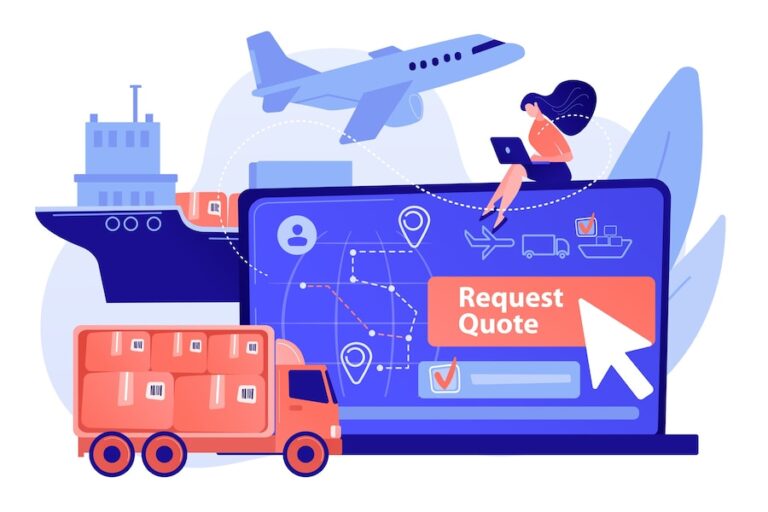
Contents
In the fast-paced world of logistics, the efficiency of your freight forwarding operations can make or break your business. That’s where freight forwarding software comes in handy, serving as a crucial tool to streamline processes, enhance communication, and ensure timely deliveries. However, simply having the software isn’t enough; you need to optimize its performance to truly reap its benefits. In this comprehensive guide, we’ll delve deeper into each tip to help you unlock the full potential of your freight forwarding software.
1-Regular Updates and Maintenance
Regular updates and maintenance are the cornerstones of keeping your freight forwarding software running smoothly. Software providers often release updates to address bugs, security vulnerabilities, and to introduce new features. By staying up-to-date with the latest versions and patches, you can ensure that your software operates efficiently and securely. Additionally, performing routine maintenance checks can help identify and resolve any underlying issues before they escalate into major problems.
2-Utilize Automation Features
Automation is a game-changer in the world of logistics, and modern freight forwarding software offers a plethora of automation features to streamline operations. From automating document generation and shipment tracking to invoicing and reporting, leveraging these features can significantly reduce manual workload and minimize the risk of errors. By automating repetitive tasks, your team can focus on more strategic activities, ultimately improving productivity and efficiency.
3-Integrate with Other Systems
In today’s interconnected business landscape, integration is key to unlocking the full potential of your freight forwarding software. By integrating with other systems such as accounting software, CRM systems, and transportation management systems (TMS), you can create a seamless flow of data across your organization. This integration eliminates the need for manual data entry, reduces duplication of effort, and improves overall visibility and collaboration. Whether it’s syncing shipment data with your accounting system or automating order processing with your CRM, integrated systems can streamline your operations and drive efficiency.
4-Customize to Your Needs
One size doesn’t fit all when it comes to freight forwarding software. Every business has unique requirements and workflows that may not be fully addressed by off-the-shelf solutions. That’s why it’s essential to choose a software that offers customization options, allowing you to tailor the system to your specific needs. Whether it’s customizing workflows, reports, or user interfaces, customization empowers you to adapt the software to your business processes, rather than the other way around. By configuring the software to align with your unique requirements, you can improve user adoption, streamline processes, and drive greater ROI.
5-Train Your Team
Investing in proper training for your team is critical to maximizing the effectiveness of your freight forwarding software. Even the most advanced software is only as good as the people who use it, so it’s essential to ensure that your employees are well-trained on how to leverage its features effectively. Provide comprehensive training sessions covering everything from basic navigation to advanced functionalities. Additionally, offer ongoing training opportunities to keep your team updated on new features, best practices, and industry trends. By empowering your employees with the knowledge and skills they need, you can boost user adoption, minimize errors, and maximize the ROI of your software investment.
6-Monitor Performance Metrics
Effective performance monitoring is essential for identifying areas of improvement and measuring the impact of your optimization efforts. Keep track of key performance metrics such as on-time delivery rates, shipment accuracy, and customer satisfaction levels. Analyze these metrics regularly to identify trends, spot potential issues, and make informed decisions to optimize your operations. By monitoring performance metrics, you can identify areas for improvement, implement targeted optimizations, and track the results over time. This data-driven approach enables you to continuously refine and improve your freight forwarding processes, ultimately driving greater efficiency and customer satisfaction.
7-Stay Updated with Industry Trends
The logistics industry is constantly evolving, with new technologies, regulations, and market trends shaping the landscape. To stay ahead of the curve, it’s essential to stay updated with the latest industry trends and developments. Attend industry conferences, webinars, and seminars to learn about emerging technologies, best practices, and regulatory changes. Join industry associations and online forums to connect with peers, share insights, and stay informed about industry developments. By staying abreast of industry trends, you can position your business for success, anticipate future challenges, and proactively adapt your freight forwarding processes to stay competitive.
8-Seek Feedback from Users
Finally, don’t underestimate the power of feedback from your team members who use the freight forwarding software on a daily basis. They’re the ones who are intimately familiar with its strengths, weaknesses, and pain points, so their input is invaluable for identifying areas for improvement. Encourage open communication and solicit feedback from users regularly through surveys, focus groups, or one-on-one meetings. Listen attentively to their suggestions, concerns, and pain points, and take action to address them wherever possible. By involving your team in the optimization process, you not only make them feel valued and engaged but also gain valuable insights that can help drive continuous improvement.
Conclusion:
In conclusion, optimizing your freight forwarding software is essential for maximizing efficiency, minimizing errors, and staying competitive in today’s logistics landscape. By following these tips and implementing best practices, you can unlock the full potential of your software investment, streamline your operations, and deliver exceptional service to your customers.